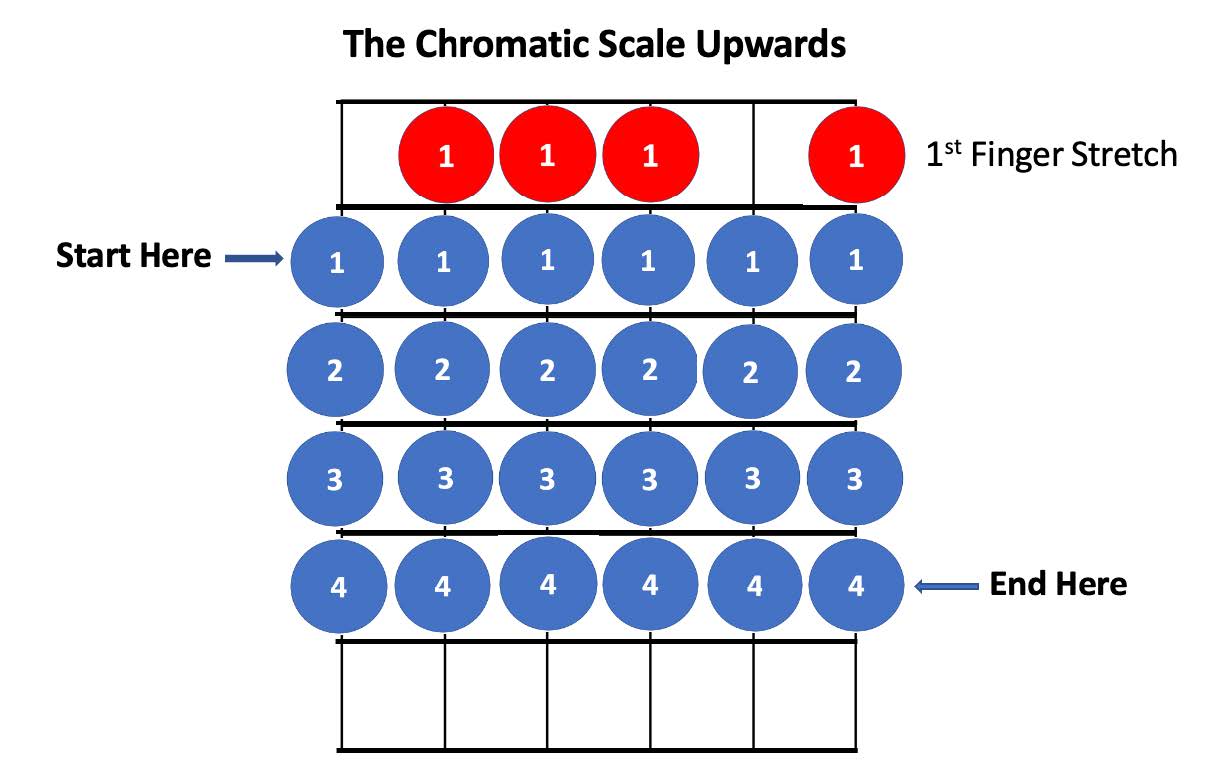Hi everyone, Russ here. I’ve got a fun and challenging exercise for you to develop fluidity and dexterity in your playing. If you have ever tried to play a chromatic scale, you may have found a bunch of different ways to play it but one of the coolest ways is to approach it in position, that is, without having to move your thumb and reset every time you change from one string to the next. Using first and fourth-finger stretches also provides a standardized way to move upwards and downwards through the scale.
In the first exercise, we will go from the lowest note on the low E string to the highest on the high E string. To do so, we need to employ a stretch on the 1st finger on strings A, D, G, and high E (5, 4, 3, and 1). After stretching with the 1st finger, it slides quietly to the next fret (so, starting on the 5th fret, it will move from the 4th to the 5th fret). Make sure to always keep your fingers in position, not letting them fly away (avoiding the dreaded “flying finger syndrome”), playing legato letting the notes ring their full value so as not to be able to hear any difference between one note to the next, especially when moving from one string to the next. This should sound like one continuous scale from the first note to the last.
Exercise 1: The Chromatic Scale Upwards in Position
In the second exercise, we now move the scale downwards from the 4th finger on the high E string down to the 1st finger on the low E string. This is achieved by stretching the 4th finger on the B, D, A, and E (2, 4, 5, and 6) strings. As before, always keep your fingers in position, not letting them fly away and playing legato, letting the notes ring their full value so as not to be able to hear any difference between one note to the next. As before, this should sound like one continuous scale from the first note to the last.
Exercise 2: The Chromatic Scale Downwards in Position
Practice this slowly at first, and as you develop your facility, try it at different speeds and all over the neck.
About the Author
Russ Spiegel is a commissioned composer and arranger as well as a highly respected guitarist, producer, bandleader, writer, musicologist, and award-winning sound engineer. He received his undergraduate degree in Philosophy from the University of Michigan, Ann Arbor and continued his studies in Jazz Performance, Composition, and Arranging at the Berklee College of Music in Boston. Afterwards, Russ spent more than a decade living and performing in Europe, recording a number of albums, performing at numerous jazz festivals, receiving the city of Frankfurt, Germany’s prestigious Jazz Stipendium award (1999). In 2001 he returned to the US, settling in country’s jazz capital of New York City, quickly becoming an established part of the music scene. Russ earned his master’s degree in Jazz Performance at City College of New York on a Barbash scholarship (2004-06) before going on to receive his doctorate in Jazz Composition at the University of Miami Frost School of Music as a Henry Mancini Institute Fellow (2013-16).

